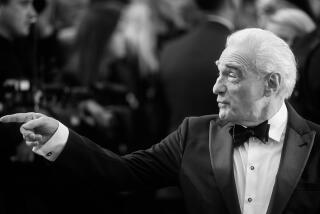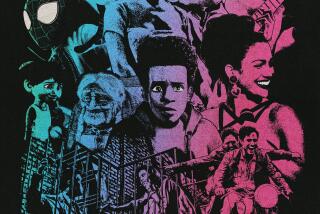Leone: The Good, Bad and Memorable : An Appreciation
- Share via
Say the name Sergio Leone in Monument Valley and the mocking echo you’d get back is “spaghetti Westernnnnnnnnn.” But the Italian-born director who died Sunday deserves something more than the rep as the man who clamped a cheroot in an actor’s mouth and invented Clint Eastwood, or made the ankle-length duster a thing of chic in Paris for about 15 minutes.
Leone’s “dollars trilogy,” “A Fistful of Dollars,” “For a Few Dollars More” and “The Good, the Bad and the Ugly,” were prickly cactuses that landmarked the ‘60s for many. Even now, the eerie sound of Ennio Morricone’s scores, without which any Leone movie is unthinkable, can bring back a whole era in an aural rush.
As he burrowed into the form of the American Western, cross-pollinating it with samurai theatrics, Leone turned heroism upside down. As critic David Nicholls pointed out, our shock at the sight of a stubbled Eastwood, impassive under his poncho and on his mule in the opening minutes of a “Fistful of Dollars,” wasn’t merely the sheer, tangible meanness of the man. It was the notion that this was the good guy.
He became point man for a new wave of anti-heroic Westerns, a place where the kids from the counterculture, uncomfortable with the politics of John Wayne, could feel right at home. Some of the notable fallout from Leone’s international successes were “Pat Garrett and Billy the Kid,” “High Plains Drifter,” “The Wild Bunch,” “The Outlaw Josie Wales” and “Two Mules for Sister Sara.” (You could also make a case that Leone was only paying back a debt incurred by the mythic anti-heroism of “The Left-Handed Gun.”)
What Americans sometimes overlook is Leone’s intrinsic sense of humor. Watch the stakeout scene in the opening of his best Western, “Once Upon a Time in the West”: that business at a desolate railway station with a drip of water falling on Woody Strode’s Stetson if you doubt that this was a film maker in whom irony and humor flourished side by side. It’s the sort of dry humor that seems bred into the bones of his best icons, Eastwood or Henry Fonda, and you find it there as surely as marrow.
There was something wonderfully luxurious about Leone’s eye for space and for faces that seemed to loom more terrifyingly than ritual masks. By temperament he was, of course, European, not spare and American, and that helped. It gave the whole mad operatic side to his movies a kind of artistic license. Finally, this bubbling ferment came to a head in his dream movie, “Once Upon a Time in America,” his panoramic homage to the world of the Lower East Side Jewish gangster.
For some of us, these bloody twin fairy tales are Leone at his prime-- mythic, inscrutable, dryly wicked, infinitely rewarding. For others they are only Leone at his most inflated, where a contemptuous spit becomes a torrential slow-mo spume.
In “Once Upon a Time in America,” which can only be judged in its longest version since the American release-print was scissored into incomprehensibility, he manipulates time to make an opium dream story of visual magnificence, as breathtaking as his Westerns. And he does for this closed-off ethnic community what Coppola was able to bring to the “Godfathers,” a vivid sense of a world that hits every single one of your senses, maybe even taste and smell. That’s hardly un-Italian, either.
More to Read
Only good movies
Get the Indie Focus newsletter, Mark Olsen's weekly guide to the world of cinema.
You may occasionally receive promotional content from the Los Angeles Times.










